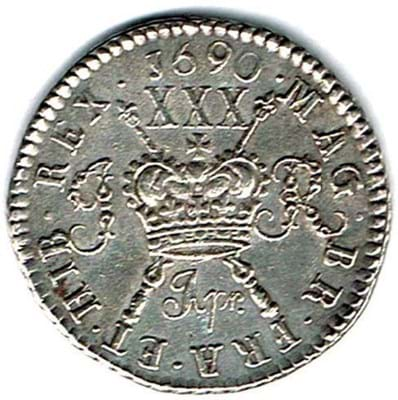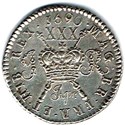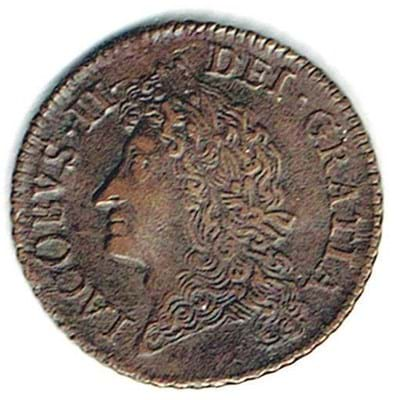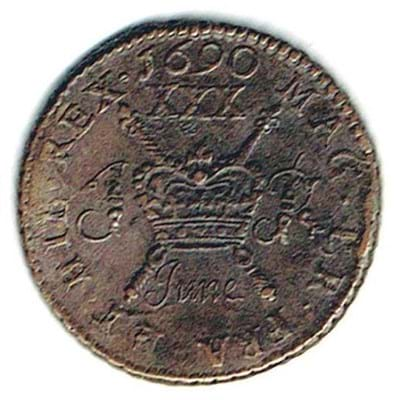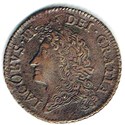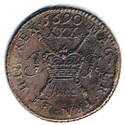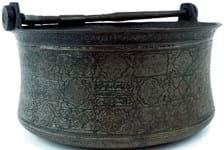‘Gunmoney’ coins were issued to the forces of the deposed James II during the Williamite War in Ireland between 1689-91.
They were minted in base metal (the name stems from the idea that guns were melted down to produce them), but designed to be redeemed for silver coinage in the event of a Stuart victory.
That replacement, of course, never took place, although gunmoney was allowed to circulate (at much reduced face values) into the early 18th century.
The average gunmoney half crown (displaying the numerals XXX for 30 pence) remains relatively affordable. Copper examples in this sale on May 5 sold at €85-540 each depending upon type and condition.
However, this rarity was a silver proof probably struck in Dublin after the mint was captured after the Battle of the Boyne.
The term ‘proof’ is something of a misnomer. "Although called proofs by many collectors and dealers these are in fact restrikes made when the Dublin mint was captured by Williamites in July 1690,” said auctioneer Ian Whyte. “Several dies were taken and later used to make restrikes in copper, silver and gold."
It was in a small collection of about 14 “Gunmoney” coins handed down over three centuries to the present owner.
In ‘extremely fine’ condition, it had been estimated at €2500-3500 (plus buyer’s premium).
The coin sold to an Irish collector in the room who outbid a German collector on the telephone.



